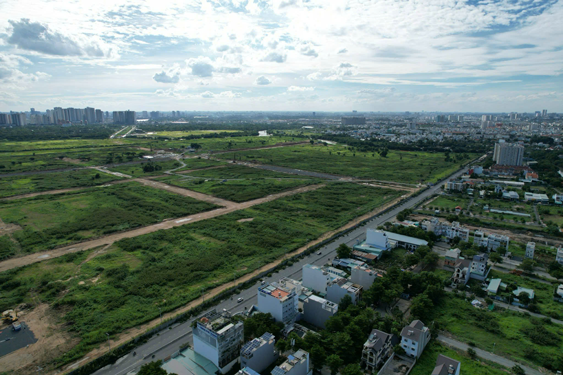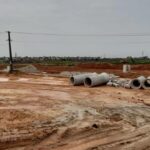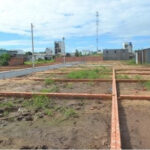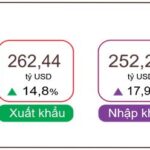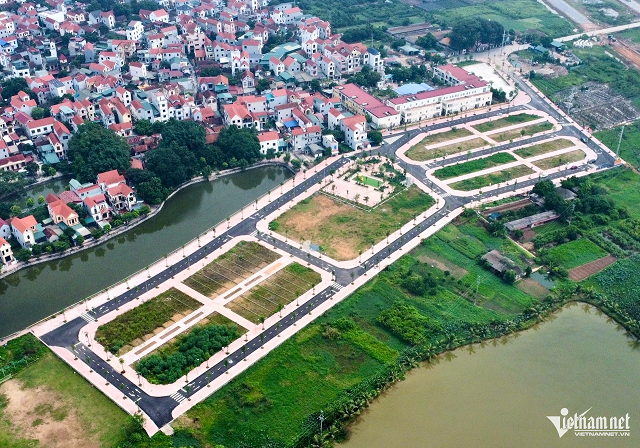Proposed Amendments to the 2024 Land Law: Addressing Bottlenecks and Enhancing Efficiency
The Ministry of Agriculture and Environment (MAE) is seeking wide-ranging feedback from organizations and individuals to finalize the draft amendments to the 2024 Land Law before submitting it to the National Assembly for consideration at the 10th session of the 15th term.
Unblocking Key Constraints
According to the MAE, after more than a year of implementation, the 2024 Land Law has revealed several challenges. The limitations in the current regulations not only hinder businesses in investment and project development but also directly affect the rights of citizens, especially in procedures such as land certification, change of land use purpose, land subdivision, and compensation in case of land revocation.

Experts believe that direct state pricing of land will help curb speculative prices.
One of the significant bottlenecks identified is the mismatch between land use planning and plans and the current model of local administration with two levels. The annual land use planning at the district level is no longer practical, causing delays, generating unnecessary procedures, and slowing down the process of land exploitation. Many households have missed out on production and business opportunities due to waiting for the land use plan updates, resulting in considerable losses.
Regarding land allocation and leasing, most projects are currently carried out through auctions or tenders. However, these processes are complex and overlapping due to their dependence on multiple laws, leading to prolonged project preparation.
Notably, the MAE proposes to clarify the state’s role in determining land prices as the representative of the owner. Accordingly, in the primary market, which includes land allocation, leasing, and change of land use purpose, land prices should be decided by the state and not rely on consulting organizations. In the secondary market, involving land buying, selling, and mortgaging, land prices will be determined by mutual agreement between the parties, with indirect state regulation through planning, infrastructure, and financial instruments.
However, in practice, primary market pricing still heavily depends on consulting results and secondary market prices, while the specific pricing methods lack transparency and fail to reflect market dynamics accurately. This diminishes the state’s regulatory role, affects project implementation progress, and causes dissatisfaction among citizens whose land is revoked but receive compensation that does not match the actual value.
Another issue highlighted by the MAE is the inaccuracy in applying valuation methods, especially the surplus method, which relies on market data, investment types, and land lease prices. Meanwhile, the land use rights market is highly volatile, and data is mostly based on old prices, failing to reflect the actual value or future potential. This often disadvantages rural residents as the true value of their land is not accurately represented in transactions.
Dr. Pham Viet Thuan, Director of the Ho Chi Minh City Institute of Environmental Economics, asserts that amending the Land Law is necessary and aligns with the orientation of developing a socialist-oriented market economy. He points out that many provisions in the current law are not practical and fall short of meeting business needs. Particularly, the land use right transfer fee when changing the purpose to residential land has skyrocketed, increasing up to 38 times in Ho Chi Minh City. As a result, many people cannot legally access their land use rights.
In Dr. Thuan’s view, the state’s determination of primary market land prices is a step in the right direction to curb market instability, especially in the current context of land speculation, auction bidding, and contract abandonment, which abnormally push up prices. However, he emphasizes the need to clearly distinguish between primary and secondary market prices in the land pricing system. “The application of the K coefficient in guiding documents will establish secondary market prices based on primary market prices and serve as an effective tool for the state to regulate and stabilize the market,” he says.
The expert also stresses the importance of clearly defining the cases where primary market prices should be applied and those where secondary market prices are more suitable. Accompanying decrees and circulars will play a crucial role in concretizing and providing detailed guidance to ensure feasibility in practice.
Comprehensive Regulatory Tools Ensure Transparency
While the proposal to grant the state the authority to determine primary market land prices is deemed necessary to ensure its role as the representative of the people’s ownership, concerns remain about the potential lack of market factors in pricing. This could lead to a resurgence of the “dual price” situation in the land market, affecting market transparency, causing budget shortfalls, and creating inequality among transaction participants.
The “dual price” situation was prevalent in the past, where the same plot of land had two different prices: the price recorded in contracts and documents for calculating financial obligations was often significantly lower than the actual transaction price in the market. The main reason was that the state-issued land price table failed to keep up with market fluctuations, resulting in a substantial gap between the official and actual prices.
Mr. Vo Hong Thang, Deputy General Director of DKRA Group, cautions that if land pricing is solely determined by the state without market reflection, it could lead to subjective valuation and a resurgence of the “dual price” mechanism. He suggests that pricing should be based on market principles to ensure fairness among the state, businesses, and investors. Mr. Thang analogizes that if the state “both plays football and referees,” there would be a lack of independent oversight.
Instead of eliminating market factors, Mr. Thang recommends that the law consider categorizing land users to provide appropriate support policies. For example, financial obligations could be exempted or reduced for vulnerable groups when changing land use purposes, as previously suggested by many experts.
Meanwhile, Mr. Le Hoang Chau, Chairman of the Ho Chi Minh City Real Estate Association, believes that there should not be excessive concern about dual pricing or the potential for businesses to take advantage of land policies. He asserts that the state possesses comprehensive regulatory tools, from taxation to credit control, to manage the real estate market and prevent profiteering. “The state has the right to decide land prices in the primary market as the representative of the people’s ownership. On the other hand, the secondary market, where civil transactions between citizens and businesses take place, should be left to market self-regulation,” he emphasizes.
In reality, over the past two years, tax control, notarization, and management of real estate transfer dossiers have been strictly enforced. Many citizens who used to ask buyers to declare a lower price to reduce taxes now have to comply with the regulations, as notary and tax agencies no longer allow low declarations and even require corrections if significant discrepancies are detected. Mr. Pham Huu T., a real estate investor in Lam Dong, shared that he used to declare a lower transfer price to save costs, but since the agencies tightened their control, he has been complying sincerely. “Buyers also refuse to declare a lower price now. They worry about paying higher taxes when they sell, so they insist on declaring the actual price,” Mr. T. said.
Mr. Nguyen Dang Phu, a broker in Ho Chi Minh City, confirmed that the practice of declaring “dual prices” is almost non-existent now. The tax authorities are closely monitoring such cases. Some violators have been summoned and even warned of criminal proceedings. Both buyers and sellers are now serious about compliance, and whoever declares the price pays the corresponding tax.
Curbing Speculative Prices
According to Mr. Le Hoang Chau, determining land prices through consulting organizations and appraisal councils, as is currently done, can create loopholes and even lead to “collusion” in valuing land. Therefore, state pricing in the primary market is necessary. In the secondary market, market mechanisms should be fully operational, under the state’s control through tax instruments. This approach not only ensures land price transparency but also helps “cool down” the real estate market and prevents speculative price inflation.
Unblocking Project Pipelines: Navigating Land Valuation Hurdles to Prevent Soaring Housing Prices
According to experts, without timely intervention from authorities and a legal framework for land valuation, real estate prices may continue to soar unchecked.
The Stock Market Crackdown: Taking a Tough Stance on Manipulation and Stock Price Fixing
“We employ cutting-edge technology to detect anomalous transactions, restoring investors’ trust and confidence. With our advanced systems, we can identify suspicious activity and ensure the integrity of the market. Our tools provide a safeguard against fraud, giving investors peace of mind and a secure environment in which to operate.”
The New Push for Corporate Bond Market
The Vietnamese corporate bond market has been on a notable recovery path since the crisis in 2022 and the first half of 2023. While it aims to become a long-term capital mobilization channel, sharing the burden with the banking system, there are numerous aspects of the corporate bond market that need improvement. A key catalyst for the market’s future growth is considered to be credit ratings.
The New Sub-division Regulations in Ba Ria – Vung Tau: Unraveling the 2024 Land Law
On September 7, the People’s Committee of Ba Ria-Vung Tau Province announced the issuance of Decision No. 24/2024 (referred to as Decision No. 24) regulating the conditions for land division and amalgamation and the minimum area allowed for land division, applicable to various types of land within the province.

























